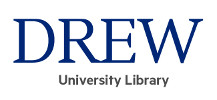 Library Guides
Library Guides Library Guides
Library Guides
Image text: "Copyright Basics: Congress is allowed to pass laws to promote the progress of science and the useful arts by securing for limited times to authors & inventors their exclusive rights to their respective writings and discoveries."

Measuring Fair Use-- the Four Factors. An excellent discussion with examples that help determine fair use.~From Stanford Libraries
Copyright allows creators to control what people can do with their original works.
"Copyright, a form of intellectual property law, protects original works of authorship including literary, dramatic, musical, and artistic works, such as poetry, novels, movies, songs, computer software, and architecture.' (U.S. Copyright office, FAQ)
This includes the ability to sell or transfer those rights-- so copyright in many popular creators' works are controlled by a corporation or other entity that has obtained the rights.
Copyright includes the rights to authorize or forbid:
Creators of visual art also have a right to Attribution and Integrity.
At one time, works had to have a notice of copyright and be registered to be copyrighted.
Under current law, that's no longer true: the minute a work is fixed in tangible form, it is copyrighted to the creator.
Both displaying copyright notices and registering your copyright with the U.S Office of Copyright may be helpful in protecting your work; but neither are required. The lack of a copyright notice does not indicate a work is not copyrighted.
Use these questions to guide you as you make decisions about using content in the classroom. This guide has a tab w/resources to help you answer each question. Follow the questions in order. It is designed to lead you from easier to more difficult copyright questions.
Questions? Need Help? Email reference@drew.edu
Drew University Library, http://www.drew.edu/library